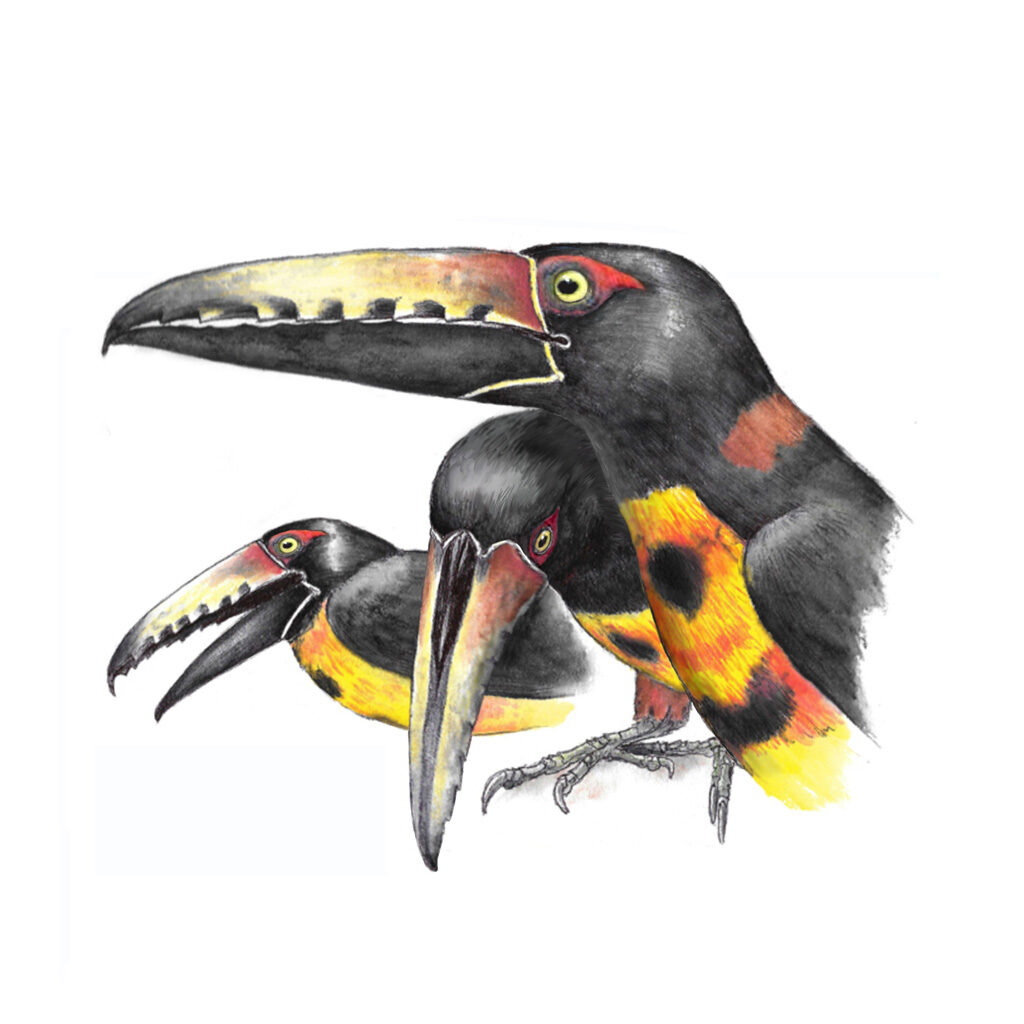Collared Araçari

This brilliantly-colored cartoonish bird is a medium-sized toucan, about 16″ long (¼ of that is beak) and is found at BIB, particularly around the milpa but throughout the forest when its favorite trees are bearing. It’s mainly a fruit-eater, but it also eats insects, lizards, bird eggs, and other small prey. There are two options for spelling/pronunciation: aracari (ar-uh-CAR-ee) and araçari (ar-uh-SAR-ee, pronouncing the ç as in the word “façade”). Most birders at BIB pronounce it ar-uh-CAR-ee.
The collared araçari ranges throughout Central America and into the northern edge of South America: Ecuador, Colombia and Venezuela, in lowland forests. BIB is in the Maya Mountain foothills, so it is probably at the upper elevation edge of its preferred habitat here. There’s some nice video here.
Traveling in flocks of up to fifteen adults and their young, aracaris make use of tree cavities, usually old woodpecker holes, to raise their young and, oddly enough, to pile into at night, all together, to sleep. They also raise the chicks communally, all of the adults bringing food to the chicks even after they fledge and leave the nest.
This is one of my favorite birds to watch, bold, easy to spot, brightly colored, and active. It may announce its arrival with a squeak that sounds like what happens when you step on a rubber squeaky toy: “pissek!” Check it out here.